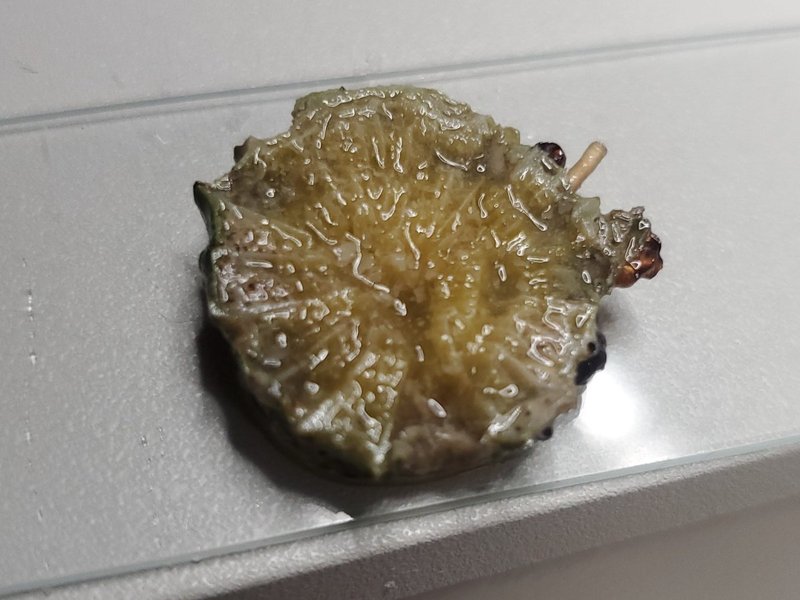-
Posts
908 -
Joined
-
Last visited
Content Type
Profiles
Forums
Gallery
Events
Store
Everything posted by ReefdUp
-
It'd be awesome to see these under a microscope. If you come to Fragfest, I'd love to get a sample from you to look at.
-
Thank you all - for the encouragement and for anyone who was able to join! This was truly an honor and a lot of fun!
-
Ode to my Tanks before MACNA All my bags are packed I'm ready to go I'm standin' here at the fishroom door I hate to wake you up to say goodbye But the actinics breakin' it's early morn The Uber's waitin' she's blowin' her horn Already I'm so lonesome I could die So wave fins and eat for me Tell me that you'll grow for me Don't crash so I'll never let me go 'Cause I'm leavin' on a jet plane To MACNA then I'll be back again Oh corals, I hate to go
-
I'm so sorry I haven't responded - it has been an insane summer. More to come on this topic soon.
-
-
My hydrogen peroxide dip ratios and times vary, depending on the issue and the coral. The most hobbyist-friendly treatment that I would generally recommend is a 4:1 ratio of tank water to hydrogen peroxide (3%) for 20 seconds for non-SPS corals. I have treatment protocols that go up to 1:1 for up to 60s, but I highly recommend against that for the general hobbyist level. I only use that protocol in extreme cases and as part of an overall treatment plan to handle the fall-out stress. I have used Cipro successfully; however, it is an antibiotic that I strongly recommend against using for most hobbyists as well. It is known to be incredibly susceptible to developing antibiotic-resistant strains of bacteria, which we definitely need to avoid in the hobby. I don't want to get onto a soapbox, but there is an overwhelming gap of knowledge in the hobby on bacteria and appropriate treatment. In fact, it appears that an incredible amount of problems we're encountering are multifactorial, so just using antibiotics will not fully address the problem. For example, I do not believe that Brown Jelly Syndrome is simply caused by Arcobacter bacteria. In my (non-medical-professional) opinion, I believe it is multifactorial, likely with temperature and phosphate playing major roles (and I'm still not convinced that Vibrio doesn't have a role). Cipro can work to remove one portion of the equation, but the conditions will still exist for the next time Arcobacter is reintroduced. So, long-term, there is a potential for antibiotic resistance to build. Cipro can target some really nasty gram-negative bacteria where we, as hobbyists, don't have good replacement options if Cipro is no longer viable. Bottom line - we can chat offline about what may work for various conditions. But it's not something I'm comfortable posting for the general hobbyist with limited diagnostic skills.
-
I hate to repeat... but... Wow. What an amazing setup, which I'm sure was hard for your friend to give up. It sounds like you've done everything right and made the most out of a dire situation. Well done! Welcome to the club! Our next meeting is Fragfest, so you definitely won't want to miss that one!
-
Thanks to everyone that came - members and guests, our great speaker and panel, all the sponsors, vendors, and volunteers! For those of you that joined as members at the meeting, you should be upgraded now. Thanks for your patience!
-
-
Great question! We are currently in the process of getting folks signed up! As folks sign up, we typically add them shortly thereafter to the meeting thread so all info is in one place. If you'd like to have a vendor attend, please reach out to that vendor and encourage them to sign up! They're more likely to attend knowing they'll have an audience.
-
It looks like the link moved to here: https://www.coralcoe.org.au/crs_event_type/seminars
-
Agree with recommendations to use kalk, although it is a pain. If you're talking about clove polyps, the old-school treatment was with fluke tabs, which are discontinued (more like, banned in the US). I've heard (but not tried) that fenbendazole works, but an in-tank treatment could affect other closely-related corals as well. Maybe someone here will chime in with their experience. Just note that trying to kill off clove polyps manually (e.g., scrubbing) can result in them reproducing similarly to aiptasia - and totally invading your tank.
-
As someone that rehabilitates coral, I've had some nasty algae in my quarantine. I resorted to Vibrant on multiple occasions, educated on the side effects. It works - and yes, there are side effects. It has been about two years since I last used it, and I still can't keep any macroalgae (correlation... not necessarily the cause). While it's not what it claimed to be, I still have a bottle. Would I use it again knowing that it is not what it claimed to be? Ehhh. I'd definitely weigh the pros and cons more and approach the problem with a more informed view.
-
Awesome!
-
NoVA Tropicals (Woodbridge) had it last time I was there. I use it... and love it.
-
I quarantine everything, and I've been doing so for about 14 years for fish and corals. I just started QTing inverts, once I learned about the life cycle of various fish flukes that use snails as an intermediary host... However, this is difficult, as snails can shed the flukes for months. Thankfully, I was running fallow at the time. Fish get the TTM, and corals get a two-stage 30d each quarantine. (Unfortunately, I had a tank crash once... gambled... and threw everything into my main tank. Now my main tank has aiptasia, and it drives me insane.) If anyone needs horror stories of the pests I've found over the years, I'm happy to scare you into QTing! In all seriousness though, if you can't QT, at least perform dips on your coral and fish. One way to get a lot of benefits of QT without doing so is to make a "QT coral rack" in your tank. New corals go there for observation. Dip them daily for the first week, every other day for the second week, every third day for the third week, and then once a week for three more weeks. This breaks the life cycle of AEFW and some other pests. And since they are somewhat segregated, it helps keep the crawlies from easily escaping before they are dipped (e.g., Montipora-eating nudibranchs).
-
I have a rimless tank with canopy... and I can assure you that my neighbors can all still notice a blue glow from my house at night. Ours was for aethetics to cover up the lights though (not for handling light spillage). (No idea why the image rotated....)
-
Good - for this, it's good to be a bit worried. Go slow. Test at least twice a day until you feel comfortable. Get some bacteria in a bottle to help if treatment stalls.
-
Sounds like you know the answer. Nutrients are required for good coloration.
-
This was a new(ish) one for me, so I have to share: coral-boring sponges. I've seen this before, but it's been years. At the time, I really didn't know what I was looking at or what to do. I've also seen similar sponges that grow up through coral skeletons and rockwork but were less invasive. These invasive sponges grow up through the skeleton of the coral, occasionally peeking out. They dissolve the skeleton along the way, undermining the coral. I theorize that this dissolving process alters the pH of the area, which then creates a less-than-ideal environment for the coral. When I received this hammer to rehab, I was told it just wouldn't ever extend its polyps (but was otherwise fine). Sure enough - it looked fine on initial examination. So, I pulled out my bandsaw. There, inside, was a weird yellow fuzzy mess, where I'd expect to see a skeleton (along with worms, detritus, and other typical skeletal inhabitants). Ok, so likely a sponge - so I dipped it, hoping to kill the sponge off. No such luck. A few weeks later, and the coral was not doing any better. I cut the skeleton down as much as I could without harming the coral and dipped again. This time, the hammer had better polyp extension afterwards. Time to start investigating more! I cut a thin slice of skeleton off the affected coral, along with a slice from a healthy Euphyllia. Here's the affected slice under a macroscope. The skeleton is clearly degraded, with only tiny pieces suspended in the sponge's tissue. Here it is under a microscope - similar findings. I wanted to then see what damage the sponge had actually done, so I bleached the affected slice. Here, you can see the remnants of the skeleton compared to a healthy slice. What I found more interesting was the tunnel pattern. Although the sponge was throughout the skeleton, it was definitely boring tunnels to the outside of the skeleton (likely for waste exchange). Here are photos of those tunnels. My plan is to regularly dip the coral in hydrogen peroxide to hopefully kill off the sponge over time (without killing the coral). Unfortunately, the sponge does not appear calcium-based (tried the vinegar test with no luck). I'll keep researching other methods as well. Here's the coral as it currently stands (just to end on progress...) @roni
-
Are things too pastel? Too brown? Only certain colors showing? What are your parameters? Can you post a FTS?



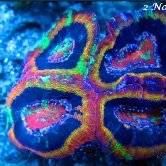
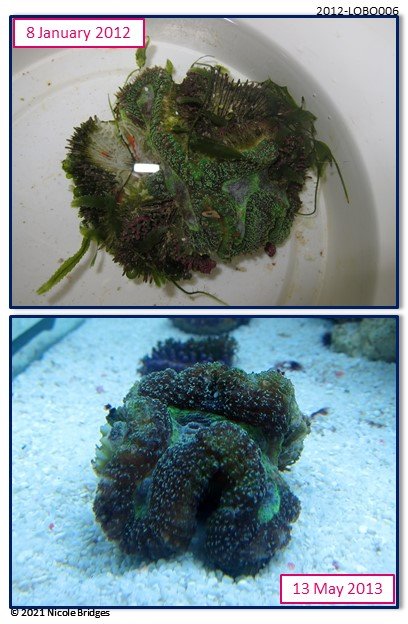
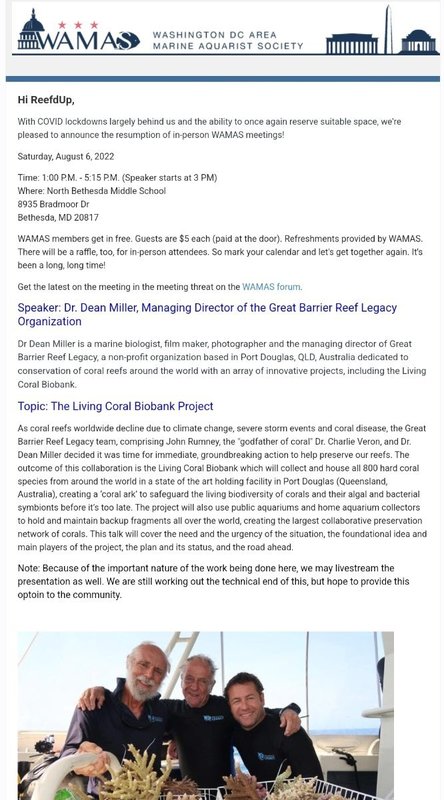
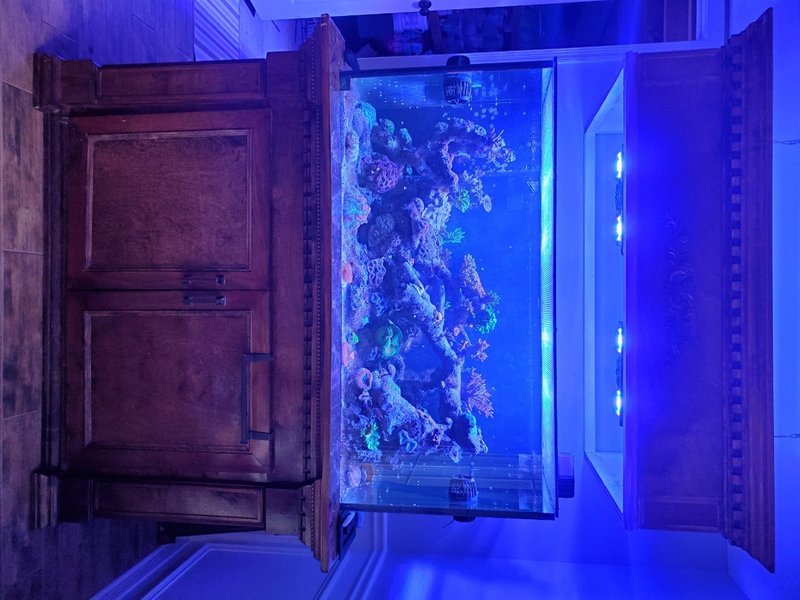
.thumb.jpg.a4202fb74da3264de902c2b2607dccb2.jpg)
.jpg.eb30a859420465ec35888f819a022ac3.jpg)
.thumb.jpg.cb299a99c8940456348f93c37ac47e9b.jpg)
.thumb.jpg.005cf145a49fae8d781d7a0bc3cc4e38.jpg)
.thumb.jpg.34b5675712427f70734d1b521a2d31d8.jpg)
.thumb.jpg.49256fbd23278ef6f30b2d8e8d2c1b3b.jpg)
.jpg.f90451c7ee40df513faaa8e80de6a5be.jpg)
.thumb.jpg.c2e5e0ba927d83c2569ad6f0d8c65b79.jpg)
